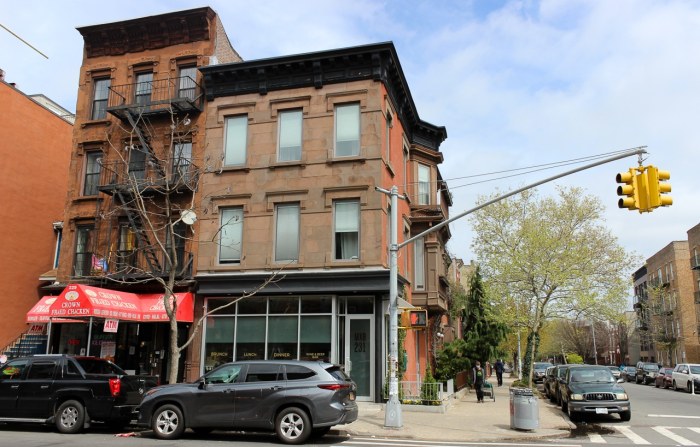A professional engineer was arrested Tuesday on charges of falsifying the inspection of the facade of an Upper West Side building where a brick fell and fatally struck a 2-year-old girl earlier this year, authorities said.
Maqsood Faruqi, 55, was charged with faking the report in 2011 for the “Esplanade,” a senior living facility on West End Avenue. Faruqi wrote that he directly supervised the inspection, calling the facade “safe,” according to the city’s Department of Investigation. But Faruqi, a private engineer hired by a contractor for the building, had never been to the building or seen it’s prior inspection reports, the DOI alleges.
In May, a piece of terra-cotta fell from the building, hitting 2-year-old Greta Greene, who was sitting on a bench in front of the building with her grandmother. Greta died a day later.
“This case represents massive breakdowns in basic public safety rules,” DOI Commissioner Mark G. Peters said in a statement. “A licensed engineer falsified safety forms obscuring a building’s danger. He is now under arrest.”
Faruqi, of Jackson, N.J., was charged with offering a false instrument for filing. He pleaded not guilty during his arraignment Tuesday, and his next court appearance is scheduled for Feb. 17th, a spokeswoman for the Manhattan DA’s office said.
If convicted, Faruqi faces a maximum sentence of 1 1/3 years to four years in prison. There is no minimum potential sentence for the charge.
His attorney, Joseph Lo Piccolo, said city codes did not require Faruqi to personally visit the site for the inspection.
“We believe that this tragic accident has been turned into an alleged crime that is not supported by the true evidence in the case,” Lo Piccolo said. “All city codes and rules were followed in the work conducted by Mr. Faruqi and his staff.”
This was not the first piece of the building that had crumbled to the sidewalk below. In March 2014, a piece of the building’s facade fell, but the city’s Department of Buildings was not notified of it, according to the DOI.
Five months later, a private consultant inspecting a nearby building emailed the Buildings Department, warning the agency there was a crack in the facade and that they should “get someone over pretty quick,” according to the DOI.
The agency, however, did not act on the warning and send an inspector.
Peters acknowledged the Buildings Department didn’t receive a report about a brick falling in March 2014, but added the agency “did ignore other red flags, and failed, on a wholesale basis, to enforce a law designed to prevent the very tragic death that occurred earlier this year.”
During their investigation, the DOI found reporting and inspection problems were more systemic. The agency found about 1,000 buildings failed to file their facade inspection reports, including 101 city-owned buildings. Further, according to the DOI, the Building Department’s Facades Unit only strives to inspect 10 to 15% of buildings found to have unsafe inspection reports.
A spokesman for the Buildings Department did not immediately respond to a request for comment.
As part of their report, DOI recommended the Buildings Department make several changes, including creating a database that tracks the history of each building required to file facade inspections, and reinspecting buildings every three months where facade violations were issued until the situation is fixed.

















